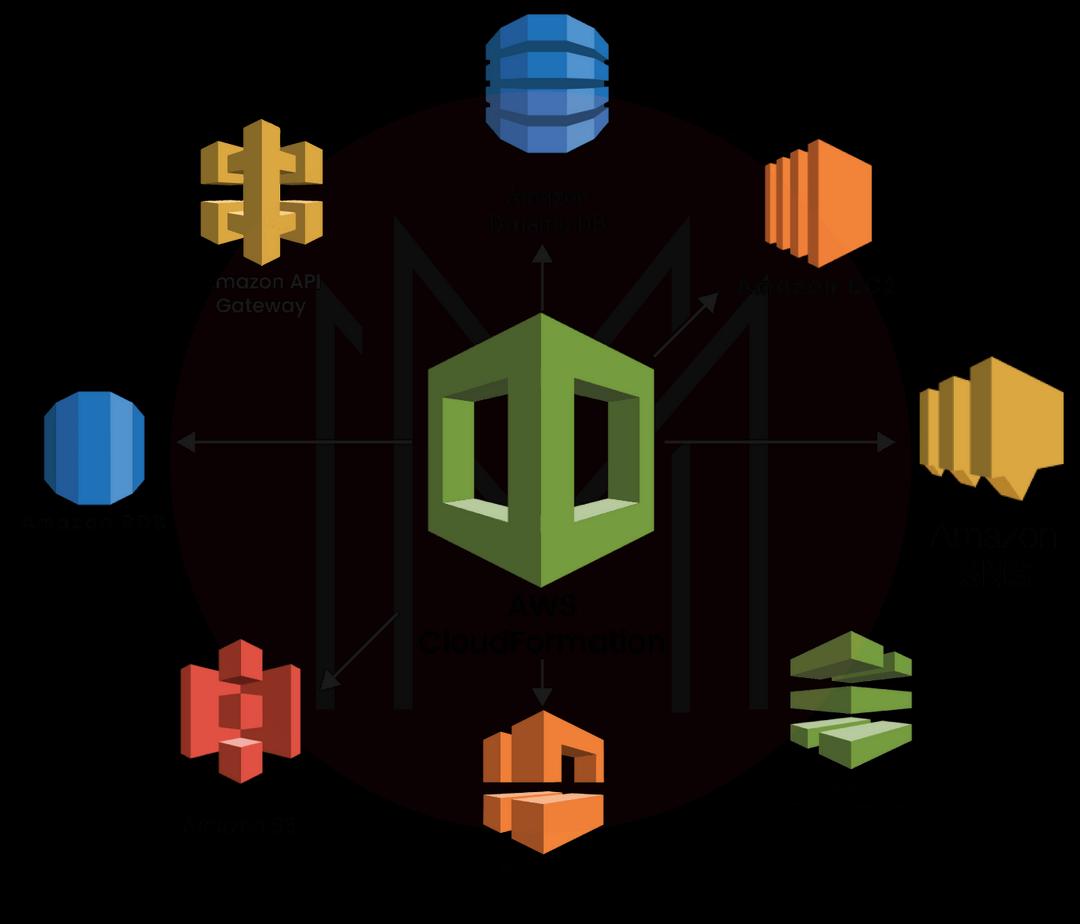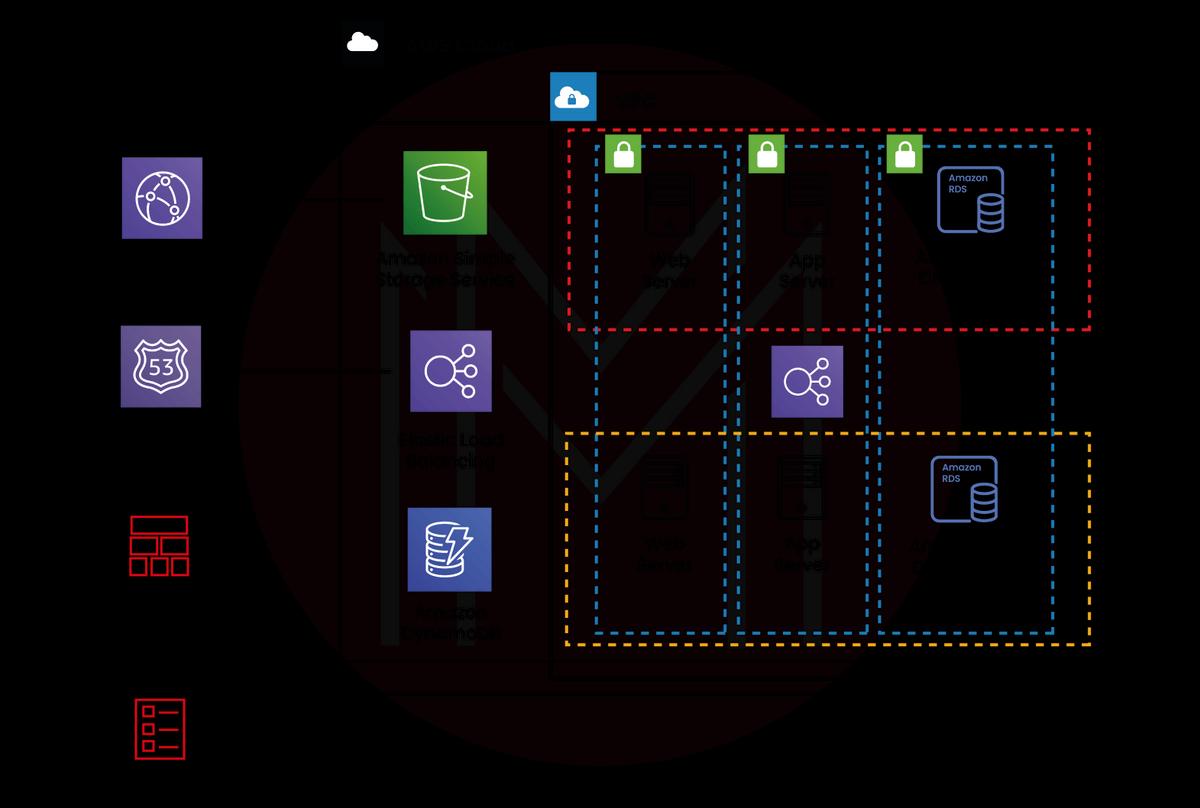- Introduction to Amazon Elastic File System
- Amazon On-Demand Instance Pricing
- AWS Kinesis
- Amazon Redshift Tutorial
- Amazon SageMaker - AIs Next Game Changer
- AWS Console - Amazon Web Services
- AWS Architect Interview Questions
- AWS Architecture
- Amazon Athena
- Top 11 AWS Certifications List and Exam Learning Path
- How to Create Alarms in Amazon CloudWatch
- AWS CloudWatch Tutorial
- Introduction To AWS CLI
- AWS Configuration
- AWS Data Pipeline Documentation
- AWS EC2 Instance Types
- AWS Elastic Beanstalk
- AWS Elastic Beanstalk Available in AWS GovCloud (US)
- AWS Free Tier Limits and Faq
- AWS EC2 Instance Pricing
- Choosing The Right EC2 Instance Type For Your Application
- AWS Interview Questions And Answers
- AWS Key Management Service
- AWS Lambda Interview Questions
- AWS Lambda Tutorial
- What Is AWS Management Console?
- Complete AWS Marketplace User Guide
- AWS Outage
- AWS Reserved Instances
- AWS SDK
- What is AWS SNS?
- AWS Simple Queue Service
- AWS SysOps Interview Questions
- AWS vs Azure
- AWS Vs Azure Vs Google Cloud Free Tier
- Introduction to AWS Pricing
- Brief Introduction to Amazon Web Services (AWS)
- Clean Up Process in AWS
- Creating a Custom AMI in AWS
- Creating an Elastic Load Balancer in AWS
- How to Deploy Your Web Application into AWS
- How to Launch Amazon EC2 Instance Using AMI?
- How to Launch Amazon EC2 Instances Using Auto Scaling
- How to Sign Up for the AWS Service?
- How to Update Your Amazon EC2 Security Group
- Process of Installing the Command Line Tools in AWS
- Big Data in AWS
- Earning Big Money With AWS Certification
- AWS Certification Without IT Experience. Is It Possible?
- How to deploy a Java enterprise application to AWS cloud
- What is AWS Lambda?
- Top 10 Reasons To Learn AWS
- Run a Controlled Deploy With AWS Elastic Beanstalk
- Apache Spark Clusters on Amazon EC2
- Top 30 AWS Services List in 2024
- What is Amazon S3? A Complete AWS S3 Tutorial
- What is AMI in AWS
- What is AWS? Amazon Web Services Introduction
- What is AWS Elasticsearch?
- What is AWS ELB? – A Complete AWS Load Balancer Tutorial
- What is AWS Glue?
- AWS IAM (Identity and Access Management)
- AWS IoT Core Tutorial - What is AWS IoT?
- What is Cloud Computing - Introduction to Cloud Computing
- Why AWS Has Gained Popularity?
- Top 10 Cloud Computing Tools
- AWS Glue Tutorial
- AWS Glue Interview Questions
- AWS S3 Interview Questions
- AWS Projects and Use Cases
- AWS VPC Interview Questions and Answers
- AWS EC2 Tutorial
- AWS VPC Tutorial
- AWS EC2 Interview Questions
- AWS DynamoDB Interview Questions
- AWS API Gateway Interview Questions
- How to Become a Big Data Engineer
- What is AWS Fargate?
- What is AWS CloudFront
- AWS CloudWatch Interview Questions
- What is AWS CloudFormation?
- Cloud Computing Interview Questions
- What is AWS Batch
- What is AWS Amplify? - AWS Amplify Alternatives
- Types of Cloud Computing - Cloud Services
- AWS DevOps Tutorial - A Complete Guide
- What is AWS SageMaker - AWS SageMaker Tutorial
- Amazon Interview Questions
- AWS DevOps Interview Questions
- Cognizant Interview Questions
- Cognizant Genc Interview Questions
- Nutanix Interview Questions
- Cloud Computing Projects and Use Cases
- test info
CloudFormation is an AWS infrastructure automation platform that allows for the testable, repeatable, and auditable deployment of AWS services. AWS CloudFormation provides a standard language for describing and providing your cloud infrastructure resources.
Things to know about AWS CloudFormation:
- AWS CloudFormation is an AWS tool that automates the setup of AWS resources by using template files.
- CloudFormation can automate the configuration of workloads using the most popular AWS services, such as the IAM Service, S3 Storage Service, and EC2 Compute Service, to implement access control.
This article introduces AWS CloudFormation, covering its advantages, features, how to use the dashboard, and the AWS command line to build and deploy CloudFormation templates.
What is AWS CloudFormation?
AWS CloudFormation is a cloud-based service that can help you design and configure the Amazon Web Services resources so that you reduce the time you spend managing these resources and spend more time concentrating on the applications you have that run in the cloud. You create a template that describes all the AWS resources you want (like Amazon RDS databases or Amazon S3 buckets), and AWS CloudFormation provides and configures those resources for you.

There are a few things you should know about AWS CloudFormation templates:
- They are formatted text files (JSON or YAML) that describe your AWS infrastructure
- They can be used to launch new stacks or update existing stacks
- They are stored in Amazon S3 and have a maximum size of 51,200 bytes
| Want to become a Certified AWS Solution Architect? Visit here to learn AWS Certification Training |
The Concept Behind AWS CloudFormation
You can use AWS CloudFormation to launch new services and applications, update existing resources orderly and predictable, or roll back changes if something goes wrong.
AWS CloudFormation templates are written in JSON or YAML and are comprised of five main sections:
- Parameters: Specify input values used when creating the stack. For example, you might specify the name of an Amazon S3 bucket to store website images.
- Mappings: Create mapping tables that can be used in the template (for example, to specify AMI mappings, so you don't have to hard-code AMI IDs).
- Conditions: Define conditions that control whether certain resources are created or certain resource properties are assigned a value during stack creation or updating (for example, creating a resource only if it doesn't already exist).
- Resources: Specify the stack resources and their properties, such as an Amazon EC2 instance or an Amazon S3 bucket. You can specify metadata for your resources (such as an instance profile) or override default property values defined by AWS CloudFormation (such as instance type).
- Outputs: Declare output values that you can import into other stacks (for example, the Amazon S3 bucket URL)

Benefits of AWS CloudFormation
You can use AWS CloudFormation to automate the creation, update, and deletion of AWS resources such as Amazon EC2 instances, Amazon EBS volumes, Amazon S3 buckets, and more. With AWS CloudFormation, you can create templates describing the AWS resources you want to deploy in a concise format.
The benefits of using AWS CloudFormation include the following:
- Reduced time spent managing resources: You can use AWS CloudFormation to provision and manage all the resources needed for your application in a single place. This lets you spend less time managing those resources and more time developing your application.
- Increased productivity: Automating the creation and updates of your resources with AWS CloudFormation can help increase your team's productivity. For example, suppose you need to create a new development environment for your application. You can use an AWS CloudFormation template to launch all the necessary resources with just a few clicks.
- Reduced costs: Using AWS CloudFormation can help you save money by reducing the need for manual processes and avoiding errors when provisioning or updating resources.
Moto of AWS CloudFormation
AWS CloudFormation is about making it easy to provision and manage your AWS resources. It enables you to create templates that describe the AWS resources you want to provision and then creates and provisions those resources for you.
AWS CloudFormation - Template Resource Attributes
There are several different types of resources that can be defined in an AWS CloudFormation template. Template resource attributes are used to specify the properties of a resource.
Some of the most common template resource attributes include
- Arn (Amazon Resource Name): The unique identifier for the resource.
- DependsOn: Used to specify any dependencies the resource has on other resources in the stack. This ensures that resources are created in the correct order.
- Metadata: Used to specify any additional information about the resource that should be passed to other resources or applications.
- Properties: Used to specify the configuration settings for the resource. These will vary depending on the type of resource being defined.

How to Create a CloudFormation Template
To create a CloudFormation template, you need to use a text editor such as Microsoft Word or Notepad++. Once your text editor is open, create a new document and save it as a .json file. Within your new document, you will need to enter in specific template format syntax for AWS CloudFormation to recognize it. This includes adding "Description," "Parameters," "Mappings," "Conditions," "Resources," and "Outputs" sections within the JSON (JavaScript Object Notation), where you will input the parameters for each section.
- The Description section is where you will provide general information about the purpose of your CloudFormation stack.
- The Parameters section is where you will specify values that you want the users of your stack to be able to customize, such as region or instance type.
- The Mappings section is used to specify the mapping of keys and values that can be used throughout the template (such as regions to AMIs).
- The Conditions section allows you to specify conditions that determine whether certain resources are created or whether certain properties are assigned to resources.
- The Resources section will specify all of the AWS resources you want to be included in your stacks, such as Amazon S3 buckets or Amazon EC2 instances.
How to Deploy a CloudFormation Template
Assuming you have an AWS account, the first step is to log into the AWS Management Console and select CloudFormation in the services dropdown. This will take you to the main CloudFormation page, where you can select Create Stack. On the next page, you have two options for creating a stack: With new or From existing resources.
If you choose With new resources, you must upload a valid template file in JSON or YAML format. The template will contain all the necessary information about your desired stack, including which AWS products you want to use and how they should be configured. Once you have selected your template file, give your stack a name and click Create.
If everything goes according to plan, you will have a new stack containing all of the resources defined in your template within a few minutes!
Check Out: AWS DevOps Interview Questions
Updating a CloudFormation Stack
To update a CloudFormation stack, you must create a new template that includes the changes you want. Once your new template is ready, you can use the AWS Management Console, AWS Command Line Interface, or AWS SDKs to update your stack.
When updating a stack, you have two options: you can specify whether you want AWS CloudFormation to replace the old template with the new one, or you can tell AWS CloudFormation to merge the new template with the old one. If you choose to replace the old template, any changes you made to the previous template will be lost; however, if you choose to merge the templates, your changes will be preserved.
Once you've decided how to update your stack, follow the instructions for creating a stack using your new template. When prompted, select "Update Stack" instead of "Create Stack." After your stack has been successfully updated, AWS CloudFormation will return an acknowledgment message.
Advanced CloudFormation
Advanced CloudFormation is an Amazon Web Services (AWS) tool that allows you to create and manage infrastructure as code. With CloudFormation, you can define templates for your AWS resources and launch them in an automated and predictable way.
CloudFormation is a powerful tool that can help you streamline your AWS deployments. In this section, we'll look at some of the more advanced features of CloudFormation, including StackSets, nested stacks, cross-stack references, and stack policies.
What Are the Benefits of Using CloudFormation Hooks?
There are many benefits of using CloudFormation hooks. They can help you automate your infrastructure, avoid repetitive tasks, and make it easier to manage your resources. Hooks can be used to automate several different tasks related to AWS CloudFormation. For example, you can use a hook to automatically delete unused stacks or create new stacks when certain events occur.
Hooks can also be used to manage multiple versions of your templates. For example, you can use a hook to update your templates when a new version is released automatically. This can help keep your infrastructure up-to-date and avoid manual updates.
CloudFormation hooks can also be used to simplify complex tasks. For example, you can use a hook to automatically provision a new Amazon EC2 instance when an instance is terminated. This can save you time and effort when provisioning new instances.
In addition, hooks can be used to monitor your resources for changes. For example, you can use a hook to track changes in Amazon S3 buckets or DynamoDB tables. This information can help debug or audit purposes.
Overall, using CloudFormation hooks can help you save time and effort when managing your AWS infrastructure.

Best Alternatives to AWS CloudFormation and how to use it?
You can configure and manage your AWS resources in a few different ways. One popular option is to use the AWS CloudFormation service. However, there are a few alternatives to using this service that you should consider.
One option is to use the AWS CLI (Command Line Interface). This tool allows you to manage your AWS resources from the command line. You can also use scripts to automate the management of your resources.
Another alternative is to use the AWS Management Console. This web-based interface lets you view and manage your AWS resources in one place. You can also create templates that specify the resources and configurations you want to deploy.
You can also use third-party tools to manage your AWS resources. These tools typically provide a graphical user interface (GUI) that makes it easy to view and manage your resources. These tools also allow you to create templates for deploying your resources.
Conclusion
In conclusion, AWS CloudFormation is a powerful tool that can help you automate the provisioning and configuring of your AWS resources. With CloudFormation, you can create templates that describe your desired AWS resource configuration and then use those templates to provision and update your resources in an automated and reliable way. If you're looking for a way to simplify the management of your AWS environment, CloudFormation is worth checking out.
 On-Job Support Service
On-Job Support Service
Online Work Support for your on-job roles.

Our work-support plans provide precise options as per your project tasks. Whether you are a newbie or an experienced professional seeking assistance in completing project tasks, we are here with the following plans to meet your custom needs:
- Pay Per Hour
- Pay Per Week
- Monthly
| Name | Dates | |
|---|---|---|
| AWS Training | Jan 13 to Jan 28 | View Details |
| AWS Training | Jan 17 to Feb 01 | View Details |
| AWS Training | Jan 20 to Feb 04 | View Details |
| AWS Training | Jan 24 to Feb 08 | View Details |

Madhuri is a Senior Content Creator at MindMajix. She has written about a range of different topics on various technologies, which include, Splunk, Tensorflow, Selenium, and CEH. She spends most of her time researching on technology, and startups. Connect with her via LinkedIn and Twitter .
















